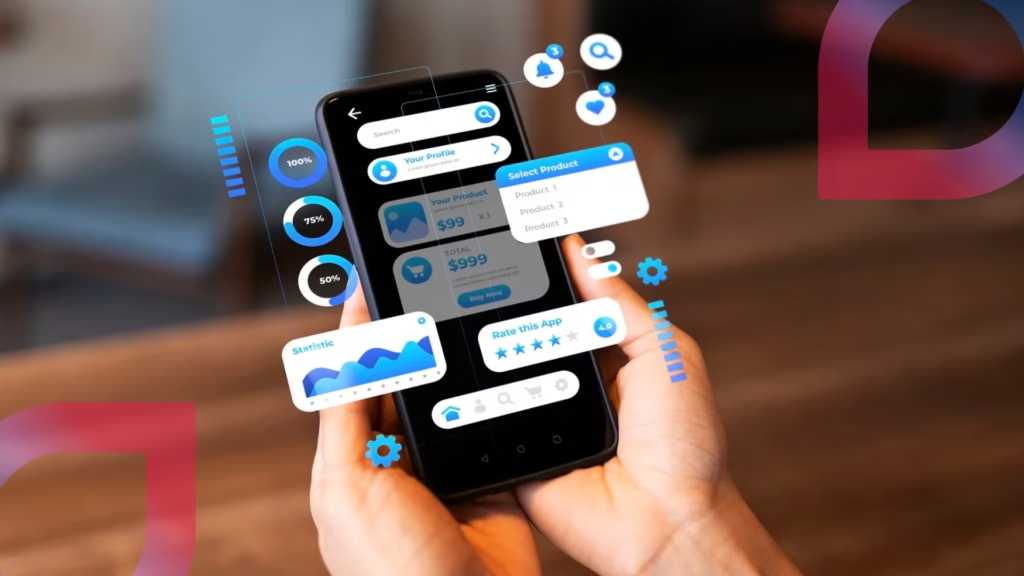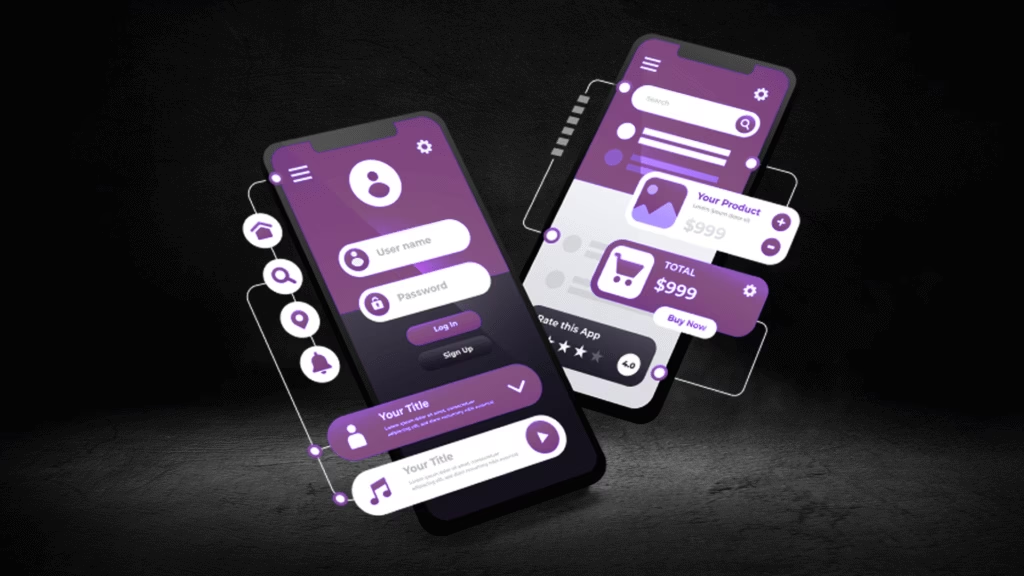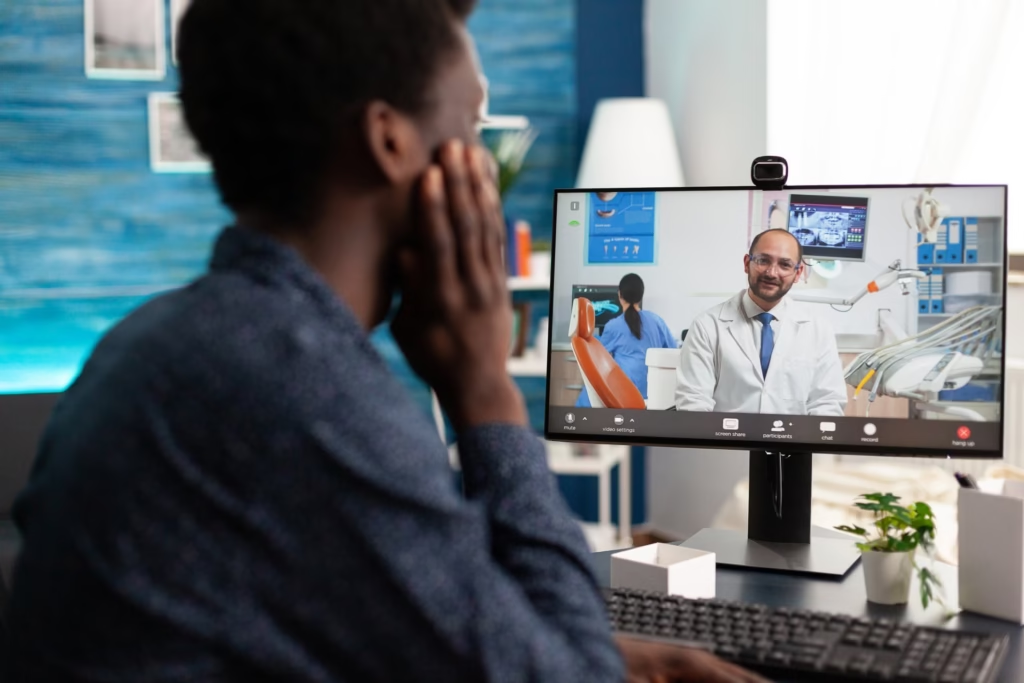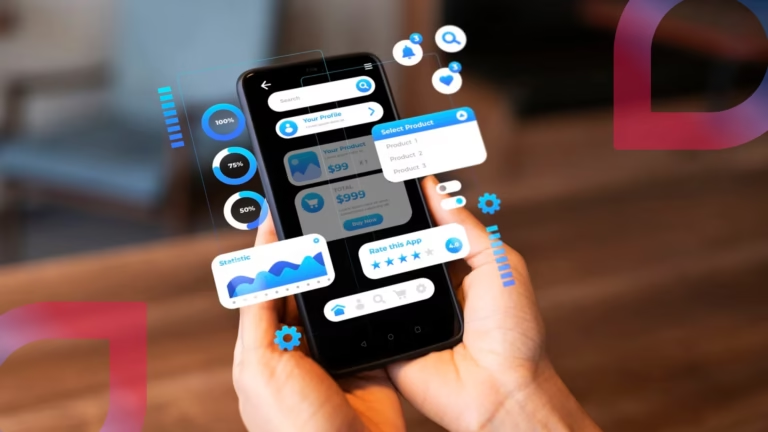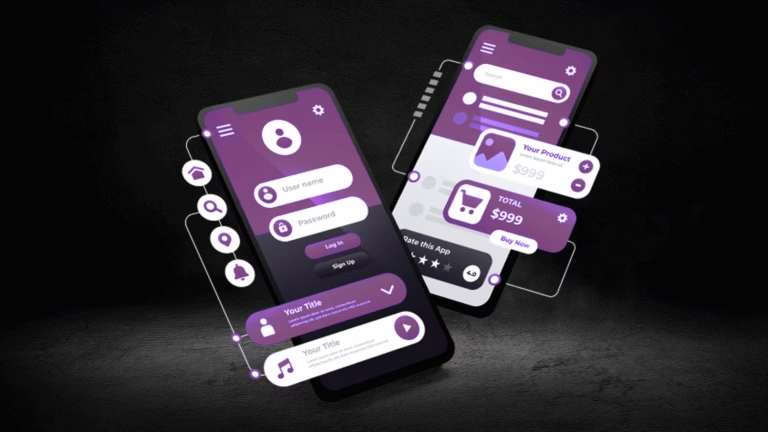
Understanding the Unique Needs of Nonprofits
Nonprofit organizations in Indianapolis operate under distinct parameters that affect their approach to building websites. Understanding these unique needs is essential for creating an effective online presence that reflects the mission and vision of the organization. Nonprofits often prioritize community engagement and outreach, necessitating a website that not only conveys their goals but also connects with the local demographic.
A pivotal aspect of building websites for nonprofits is aligning the website’s design and content with the organization’s mission. This ensures that visitors can quickly grasp the purpose and values driving the organization. For nonprofits in Indianapolis, highlighting local projects, events, and community impact can foster deeper connections with potential volunteers, donors, and stakeholders. Consequently, a website should feature relevant imagery, testimonials, and success stories that resonate with the local audience.
Accessibility is another critical factor to consider in website design. Many members of the community may have varying levels of internet access or different physical abilities. Ensuring that the website adheres to best practices in accessibility helps nonprofits in Indianapolis connect with all potential site visitors. Features such as clear navigation, alt text for images, and mobile-friendly designs are integral in creating an inclusive online experience.
Furthermore, budget constraints heavily influence the building of websites for nonprofit organizations. Many nonprofits operate on limited funding, necessitating a strategic approach to website development. Utilizing platforms that offer website templates or affordable hosting can assist organizations in managing costs without compromising on quality. Engaging with local web developers who understand the unique landscape of nonprofit work can also yield beneficial partnerships, facilitating both budget-friendly solutions and specialized skills.
In conclusion, addressing the specific requirements and challenges faced by nonprofits in Indianapolis is vital for effective website development. By aligning the website with the organization’s mission, considering demographic factors, ensuring accessibility, and managing budgets, nonprofits can create impactful online platforms that drive engagement and support their objectives.
Choosing the Right Platform and Tools
When building websites for nonprofits in Indianapolis, selecting the appropriate platform and tools is crucial to achieving the desired functionality and user experience. Several options cater to varying levels of technical expertise and organizational needs. Three of the most popular platforms are WordPress, Wix, and Squarespace, each offering unique features and benefits.
WordPress remains a leading choice for many nonprofits due to its flexibility and vast array of plugins. It is an open-source content management system that allows organizations to customize their websites extensively. Nonprofits can choose from thousands of themes and plugins to create a tailored website that enhances user engagement. While the initial learning curve can be steeper for those with limited technical skills, the long-term benefits of scalability and control make WordPress a worthy investment for growth-oriented organizations.
Wix provides an alternative for nonprofits seeking a more user-friendly solution. Its drag-and-drop interface makes it easy for users without a technical background to design a sophisticated site. With built-in templates specifically tailored for nonprofits, Wix simplifies the process of building websites. However, while it offers great ease of use, Wix may have limitations when it comes to customization and complex functionality as organizations grow or change their needs.
Squarespace is another robust option, known for its aesthetically pleasing templates and integrated e-commerce features. This platform offers a selection of beautifully designed templates suited for nonprofits looking to make a strong visual impact. Although Squarespace provides less flexibility than WordPress, it excels in creating streamlined websites with minimal effort. Squarespace can be ideal for organizations focused on presentation and straightforward online donation capabilities.
Ultimately, the choice of platform should align with the specific goals, budget constraints, and technological expertise of the nonprofit organization. Assessing these factors will lead to the best platform choice, thereby enhancing their online presence and facilitating growth.
Design with Purpose: User Experience and Aesthetics
In the digital age, a well-designed website serves as the cornerstone of an organization’s online presence, particularly for Indianapolis nonprofits. The primary objective should be to create a user-friendly experience that both engages visitors and efficiently communicates the organization’s mission. To achieve this, emphasis must be placed on effective navigation, layout design, and the thoughtful integration of visuals.
A user-friendly website should feature intuitive navigation that facilitates seamless movement through the various sections. Implementing a logical menu structure enables users to easily locate information regarding programs, events, and fundraising efforts. Consider utilizing drop-down menus and breadcrumb trails, which allows for quick access to subpages, enhancing user satisfaction and ensuring that visitors can find what they are looking for without frustration.
The layout of the website is equally significant, as it should promote the organization’s brand identity while being aesthetically pleasing. Utilizing a clean, structured layout with ample white space can draw attention to key areas, preventing overwhelming the visitor. An effective approach involves highlighting calls to action—such as donation buttons or volunteer sign-ups—by placing them prominently on the homepage and throughout the site. Moreover, the design should be responsive, ensuring compatibility with various devices, considering that numerous users may access the website from smartphones or tablets.
Visual elements play a critical role in enhancing the overall aesthetic of the web design. High-quality images and videos not only capture attention but can also evoke emotional responses, strengthening the connection to the audience. Indianapolis nonprofits should consider incorporating visuals that reflect their community impact, thereby resonating with visitors on a personal level. Additionally, color schemes and typography should align with the organization’s branding while fostering a cohesive and inviting atmosphere.
Collectively, these design elements contribute to a user-friendly and appealing website that effectively supports the mission of Indianapolis nonprofits, inviting community members to engage meaningfully.
Crafting Compelling Content that Engages Visitors
In the process of building websites for nonprofits based in Indianapolis, creating compelling content is vital to engage visitors effectively. This content serves not only to inform but also to persuade and inspire action among potential supporters. A well-structured nonprofit website should prominently feature the organization’s mission statement. This concise declaration articulates the nonprofit’s core purpose and values, allowing visitors to quickly understand what they care about and why it matters.
In addition to the mission statement, integrating success stories can significantly enhance engagement. By showcasing anecdotes of individuals or communities positively impacted by the organization’s work, websites can create powerful narratives that resonate emotionally with visitors. These stories serve as testimonies of the nonprofit’s effectiveness and can motivate visitors to contribute toward similar initiatives. Utilizing various formats, such as written testimonials, videos, or photo galleries, can enhance storytelling and create a more immersive visitor experience.
Event information is another critical content type that should be regularly updated on nonprofit websites. By providing clear details about upcoming events, including dates, venues, and registration links, nonprofits can increase participation and foster a sense of community. Highlighting donation drives prominently on the website encourages users to take immediate action, thereby translating their interest into tangible support. To bolster conversion rates, it is advisable to include calls to action that guide visitors toward donating or signing up for newsletters.
Furthermore, crafting content that employs persuasive language and is easy to read is crucial. Using active voice, creating short paragraphs, and including bullet points can improve readability. Overall, successful content is that which not only informs but also inspires visitors to become active participants in furthering the nonprofit’s mission.
Incorporating SEO Strategies for Visibility
In the competitive digital landscape, it is crucial for Indianapolis nonprofits to integrate effective search engine optimization (SEO) strategies into their website development. By doing so, they can significantly enhance their visibility and ensure that their missions are communicated to a broader audience. The primary goal of optimizing a website is to improve its ranking in search engine results, thereby driving more organic traffic to the site.
A fundamental aspect of SEO is keyword research, which involves identifying relevant terms and phrases that potential visitors are likely to use when searching for information related to the nonprofit’s cause. For Indianapolis nonprofits, this means focusing on keywords that reflect the local community and specific services or programs offered. By incorporating these keywords naturally throughout the website’s content, including headers, body text, and images, nonprofits can increase their relevance and visibility online.
In addition to keyword integration, metadata optimization is a crucial practice that cannot be overlooked. This encompasses the various elements that search engines utilize to understand the content of a webpage, such as title tags and meta descriptions. For a nonprofit organization in Indianapolis, crafting meaningful and descriptive metadata that incorporates local keywords can substantially improve search rankings and click-through rates from search results.
Lastly, link building strategies are integral to establishing authority and credibility within the nonprofit sector. By creating high-quality content that encourages backlinks from reputable sources, Indianapolis nonprofits can enhance their SEO efforts. Partnering with local businesses, collaborating with other nonprofits, or contributing guest articles to relevant blogs are effective ways to build links and strengthen online presence.
In conclusion, implementing robust SEO strategies is vital for Indianapolis nonprofits aiming to maximize their online impact. Through diligent keyword research, thorough metadata optimization, and proactive link building, these organizations can increase their visibility, foster community engagement, and ultimately achieve their mission more effectively.
Essential Features and Functionalities for Nonprofit Websites
Creating an effective website for nonprofits in Indianapolis requires the integration of features that not only enhance user experience but also streamline organizational operations. One of the most critical functionalities to incorporate is an online donation capability. This allows potential donors to contribute easily and securely, facilitating a seamless exchange of funds that is essential for the sustainability of nonprofit initiatives. Furthermore, having varied payment options can cater to a broader audience, encouraging support from diverse demographics.
Next, an event calendar is crucial for keeping the community informed about upcoming initiatives, programs, and fundraising events. This feature not only helps in the organization of events but also promotes participation, allowing stakeholders to engage directly with the nonprofit. It is beneficial to provide options for users to add events directly to their personal calendars, enhancing accessibility and encouraging higher turnout rates.
In addition, volunteer sign-up forms are necessary to facilitate community involvement. By enabling visitors to become directly engaged with the nonprofit through easy-to-fill forms, organizations can build a robust volunteer base which is vital for executing various projects without heavy reliance on paid staff. This dual approach of donor and volunteer engagement significantly amplifies the impact of the organization in the Indianapolis community.
Lastly, integrating social media channels is imperative for promoting visibility and reaching a larger audience. By including links to platforms such as Facebook, Twitter, and Instagram, nonprofits can encourage further engagement and sharing among community members. Alongside these user-facing features, implementing a Customer Relationship Management (CRM) system can greatly enhance donor relationship management. A CRM can streamline operations, track donor contributions, and manage communications effectively, ultimately boosting the success of the organization’s fundraising efforts.
Mobile Responsiveness: Reaching the On-the-Go User
In today’s digital landscape, the prevalence of mobile devices is reshaping how users access information, making mobile responsiveness a critical component for any website, particularly for nonprofits in Indianapolis. Recent studies show that a significant portion of website traffic now comes from smartphones and tablets, underscoring the necessity for organizations to prioritize mobile-friendly designs. A responsive website not only enhances user experience but also ensures that the nonprofit’s message reaches a broader audience effectively.
When building websites tailored for mobile users, several best practices should be considered. First and foremost, a fluid grid layout is essential. This design strategy helps to adjust the website’s content to fit various screen sizes, ensuring readability and accessibility. Additionally, touch-friendly elements must be incorporated. Buttons and links should be large enough for easy tapping, preventing frustration among users who may be navigating with their fingers instead of a mouse.
Another crucial aspect of mobile responsiveness is optimizing images and multimedia content. Large files can slow down loading times, particularly on mobile networks. By compressing images and utilizing modern formats like WebP, organizations can significantly enhance their site speed. Furthermore, implementing lazy loading helps deliver content more efficiently, displaying visuals only when they appear in the viewport.
Ensuring fast loading times is paramount when appealing to mobile users. Research indicates that users are likely to abandon a website that takes more than three seconds to load, highlighting the importance of trimming down unnecessary scripts and optimizing CSS delivery. By focusing on these best practices, nonprofits in Indianapolis can create mobile-responsive websites that cater to the needs of on-the-go users, effectively enhancing their outreach and impact.
Website Maintenance and Security Best Practices
Maintaining a secure and up-to-date website is crucial for nonprofits in Indianapolis, as it not only protects sensitive information but also enhances user trust. The cornerstone of effective website maintenance involves regular software updates. Content management systems (CMS), plugins, and themes often release updates to patch vulnerabilities and improve functionality. Neglecting these updates can make a website an easy target for cyberattacks, thereby compromising both data security and user experience. Nonprofits should establish a regular schedule for checking and applying updates to all components of their website.
Using secure passwords is another essential practice. Weak or default passwords can lead to unauthorized access, jeopardizing the integrity of the website. It is advisable to employ complex passwords that combine letters, numbers, and special characters, while enabling two-factor authentication where possible. Moreover, changing passwords periodically adds an additional layer of security against potential breaches, a step that should be mandatory for all users with administrative access.
Monitoring site performance is equally important for ensuring a well-functioning website. This includes analyzing metrics such as page load time, visitor behavior, and uptime. Tools like Google Analytics can provide valuable insights into how users interact with the site. Slow loading times can lead to higher bounce rates, suggesting that users may abandon the site before fully engaging with its content. Regular performance checks can help identify and rectify issues before they escalate into larger problems.
Finally, backing up website data is vital to prevent data loss due to accidental deletions, server failures, or cyberattacks. Nonprofits should implement a reliable backup solution, ensuring that data can be restored easily and quickly if needed. Regular backups enable organizations to maintain continuity and minimize disruption to their critical services. By adhering to these best practices, Indianapolis nonprofits can build robust websites that serve their missions effectively while safeguarding their online presence.
Measuring Success: Analytics and Feedback
In the process of building websites for Indianapolis nonprofits, it is imperative to implement a robust system for measuring success through analytics and feedback. Monitoring key performance indicators (KPIs) can provide invaluable insights into how well a nonprofit’s website is performing and how it aligns with its goals. One of the foremost metrics to track is visitor traffic, which reflects the number of individuals engaging with the website. Utilizing tools such as Google Analytics, organizations can observe trends over time, identify peak traffic periods, and ascertain the effectiveness of marketing efforts.
Another crucial metric is the conversion rate, which measures the percentage of website visitors who take a desired action, such as donating, signing a petition, or signing up for newsletters. Analyzing conversion rates can help nonprofits adjust their strategies to enhance user engagement and drive more effective actions that support their missions. User engagement metrics, such as bounce rates and average time spent on the site, should also be closely monitored. These indicators provide clarity on how well the content resonates with the audience and whether users find the website easy to navigate.
In addition to quantitative data, qualitative feedback is essential for fostering continuous improvement. Nonprofits can gather user feedback through surveys or interviews, allowing visitors to express their thoughts on the website’s content, usability, and overall experience. Conducting user testing sessions can also unveil critical insights by observing how real users interact with the website. This qualitative data serves to illustrate the user experience more holistically. By combining analytics with user feedback, Indianapolis nonprofits can refine their approach to building websites, thereby improving both functionality and content relevance.


